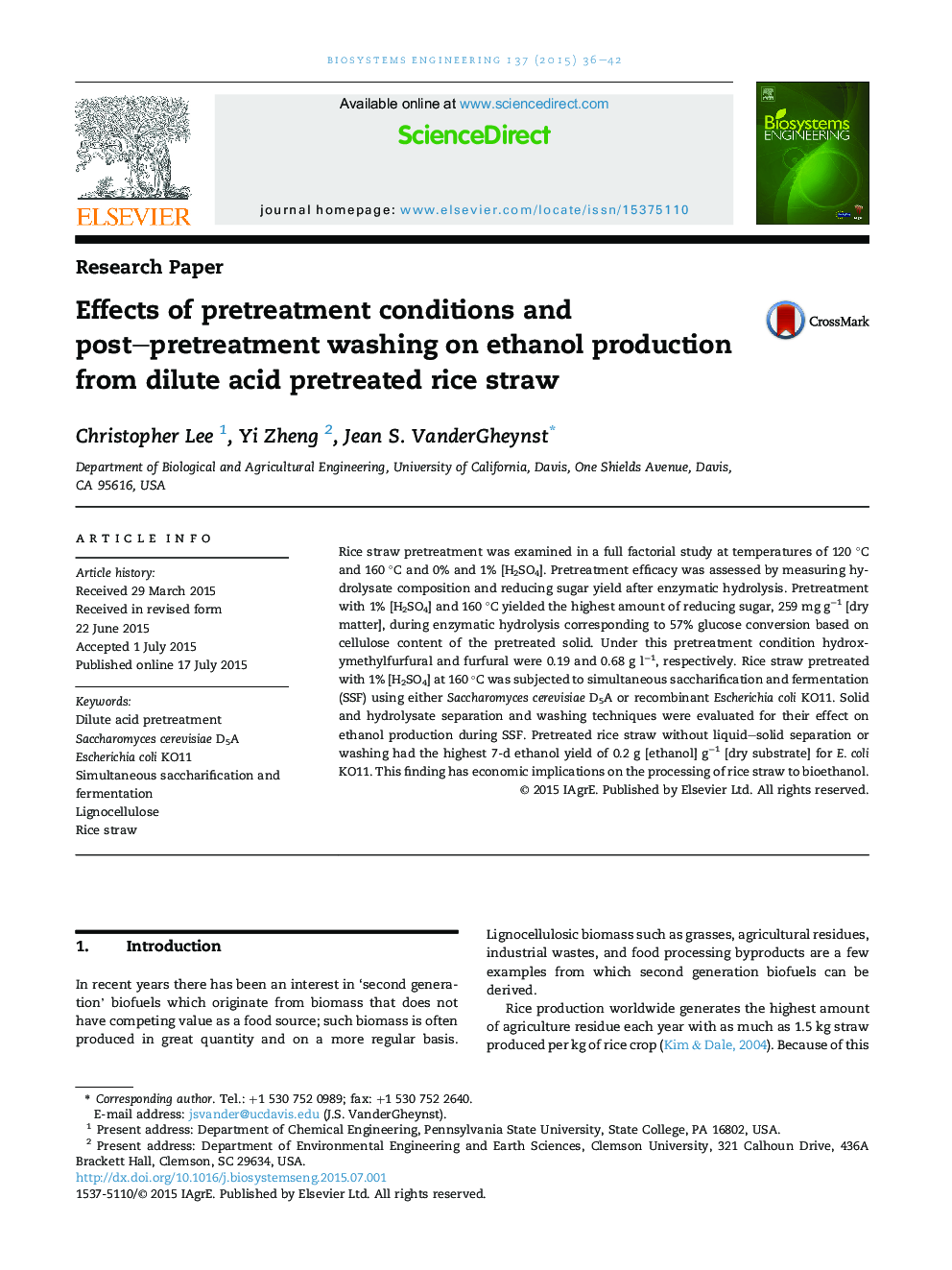| Article ID | Journal | Published Year | Pages | File Type |
|---|---|---|---|---|
| 1710978 | Biosystems Engineering | 2015 | 7 Pages |
•Rice straw pretreatment was examined in a full factorial study.•Hydrolysate composition and enzymatic hydrolysis reducing sugar yield were measured.•Pretreatment with 1% H2SO4 and 160 °C yielded the highest amount of reducing sugar.•Pretreated rice straw was subjected to simultaneous saccharification and fermentation.•Pretreated rice straw without liquid–solid separation had the highest ethanol yield.
Rice straw pretreatment was examined in a full factorial study at temperatures of 120 °C and 160 °C and 0% and 1% [H2SO4]. Pretreatment efficacy was assessed by measuring hydrolysate composition and reducing sugar yield after enzymatic hydrolysis. Pretreatment with 1% [H2SO4] and 160 °C yielded the highest amount of reducing sugar, 259 mg g−1 [dry matter], during enzymatic hydrolysis corresponding to 57% glucose conversion based on cellulose content of the pretreated solid. Under this pretreatment condition hydroxymethylfurfural and furfural were 0.19 and 0.68 g l−1, respectively. Rice straw pretreated with 1% [H2SO4] at 160 °C was subjected to simultaneous saccharification and fermentation (SSF) using either Saccharomyces cerevisiae D5A or recombinant Escherichia coli KO11. Solid and hydrolysate separation and washing techniques were evaluated for their effect on ethanol production during SSF. Pretreated rice straw without liquid–solid separation or washing had the highest 7-d ethanol yield of 0.2 g [ethanol] g−1 [dry substrate] for E. coli KO11. This finding has economic implications on the processing of rice straw to bioethanol.
